TRP’s new EVO12 drivetrain showcases an overhaul of its existing TR12 derailleur and shifter. Adding a crankset and cassette into the mix, EVO12 features revised shifter ergonomics and a new derailleur clutch.
These additions sit alongside TRP’s existing Hall Lock chain management system.
Priced at £994/$992.87 for the entire drivetrain with an alloy crankset (a carbon version is £200/$200 extra), are the changes enough to make it stand out from the crowd?
The price tag puts EVO12 in the realm of Shimano’s XTR and SRAM’s GX Transmission, both of which offer exceptional performance.
TRP has imbued EVO12 with one of the best-feeling ergonomic mechanical shifters I’ve used and exceptionally quiet chain management. However, the shifting performance, namely smoothness when changing, doesn’t quite match up to the heady price.
TRP EVO12 details and specifications
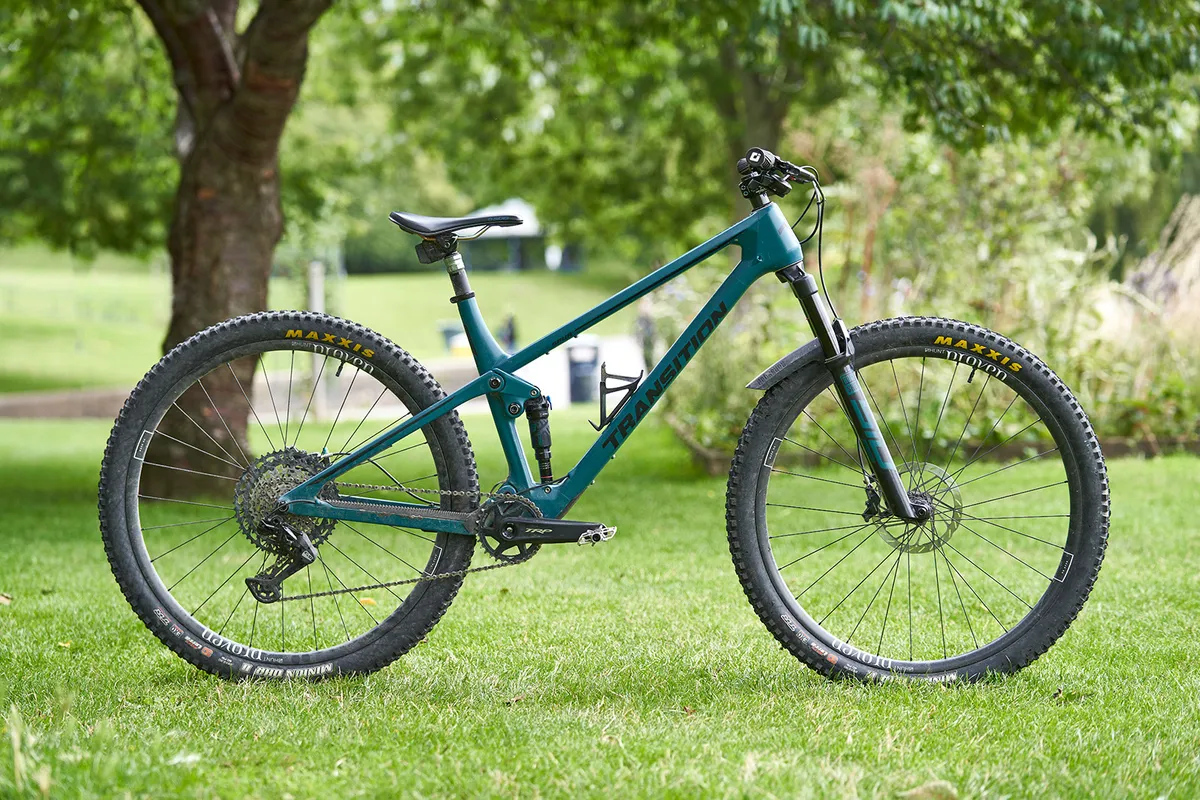
The EVO12 drivetrain builds on the first-generation TR12 derailleur and shifter. It adds two cranksets (one carbon, one alloy) and a wide-range 10-52t cassette into the mix.
To go with these additions, TRP has also redesigned the derailleur and shifter in a bid to boost performance.
We have previously tested the TR12 drivetrain. The shifting performance, durability and ease of setup stood up to the competition. However, it was let down by the shifter ergonomics and excessive chain slap and drivetrain noise.
I covered the full technical details in my first look earlier in the year, but I’ll run through the main points again here.
TRP EVO12 cassette and cranks
The EVO12 cassette and crankset are new ventures for TRP. While neither is particularly groundbreaking, they do have some features to set them out from the crowd.
The cassette features the same 520 per cent, 10-52t range as SRAM’s Eagle drivetrains and Transmissions. Where it splits the difference is the spacing of the ratios, using numerous odd-number teeth across the range.
- TRP EVO12 Cassette: 10-11-13-15-18-21-24-28-32-36-44-52T
- SRAM Eagle Drivetrain Cassette: 10-12-14-16-18-21-24-28-32-36-42-52T
- SRAM Eagle Transmission Cassette: 10-12-14-16-18-21-24-28-32-38-44-52T
The closer gaps at the lower, climbing end of the cassette make it less lurchy than the big 10t jump of Eagle drivetrains. Thanks to its machined steel and aluminium construction, the cassette weighs a competitive 370g.
I tested the alloy crankset and it’s a pretty standard affair. It features forged alloy arms with a hollow, lattice back, 30mm aluminium spindle and a narrow-wide chainring.
You won’t find much difference here compared to an aluminium GX Eagle DUB crankset or Race Face’s alloy offerings. Its weight (655g for 170mm cranks) is slightly more than an alloy GX Eagle DUB crankset, which tips the scales at 630g.
TRP EVO12 derailleur and shifter
The derailleur bears a resemblance to the old TR12. It retains the Hall Lock and carbon cage, but has a new silent clutch. This is to improve chain noise and retention.
There’s also a new cage-lock button. Again, it’s competitive weight-wise with SRAM’s GX, EVO12’s 294g a shide lighter than the GX's 300g.
The shifter is all-new, with a revised paddle shape and placement. As with TR12, the downshift paddle is angle-adjustable. The shifter is in line with its rivals, weighing 125g.
TRP EVO12 setup
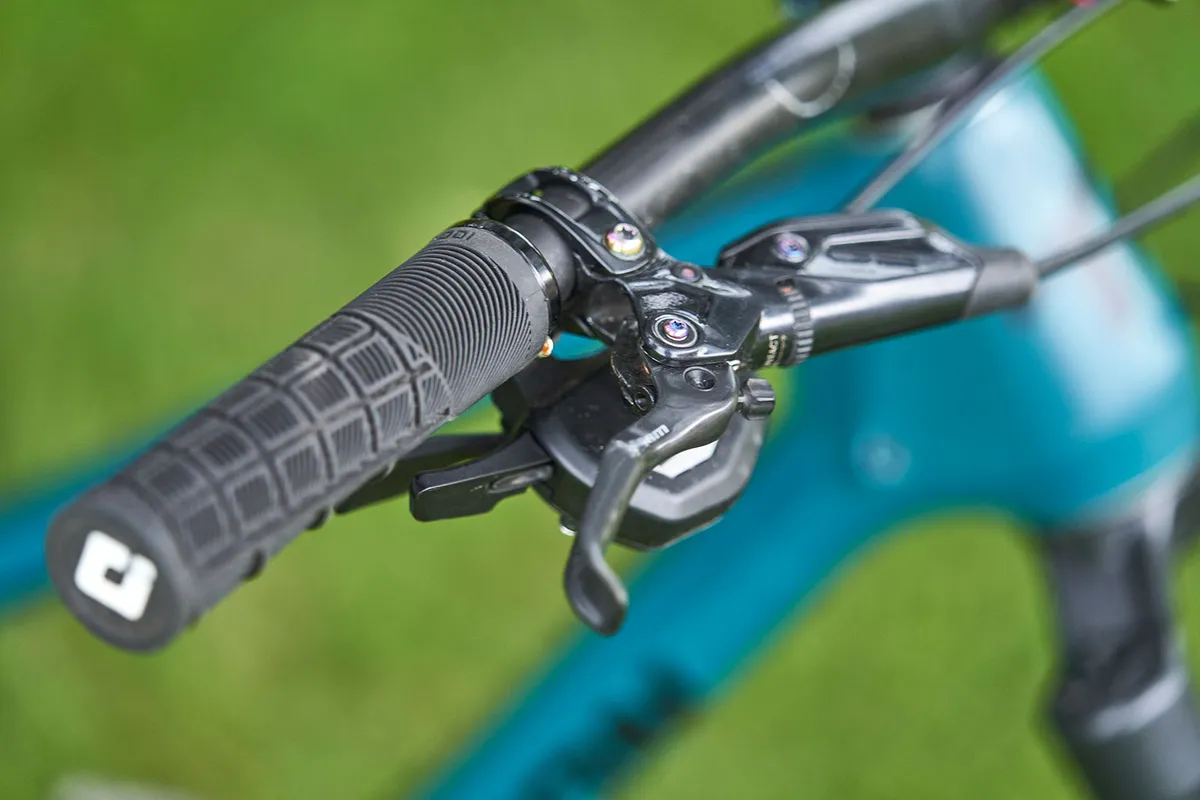
Setting up the EVO12 drivetrain was as easy as any other mechanical mountain bike groupset. While there were no instructions included, if you've fitted a mechanical groupset before, you’ll have no issues.
It took about an hour to install the groupset, including removing the old GX AXS drivetrain.
Everything bolted into place nicely and setting the derailleur's limit and B-tension screws was simple. Guides on the back of the derailleur make dialling in B-tension especially easy compared to SRAM’s B-tension tool.
Compared to SRAM’s Transmissions, setup takes longer. Transmission’s lack of gear cable and adjustment screws makes installation very quick and simple. With EVO12, and any cable drivetrain for that matter, routing the cables through some frames might be a challenge.
The clever way the gear cable inserts into the upshift paddle, and is then covered over, makes inner cable changes a breeze.
To insert the cable, pull off the rubber cover on the upshift paddle and pop it in. There’s no need to remove the top cover or a small bolt, as with SRAM or Shimano shifters respectively.
TRP EVO12 performance
I tested EVO12 over a typically British summer. Conditions were mostly wet, with a few dry and dusty days mixed in.
It was fitted to my personal Transition Spur. As such, it took in trail-centre laps alongside big, rough natural rides and traditional cross-country riding.
TRP EVO12 shifter performance
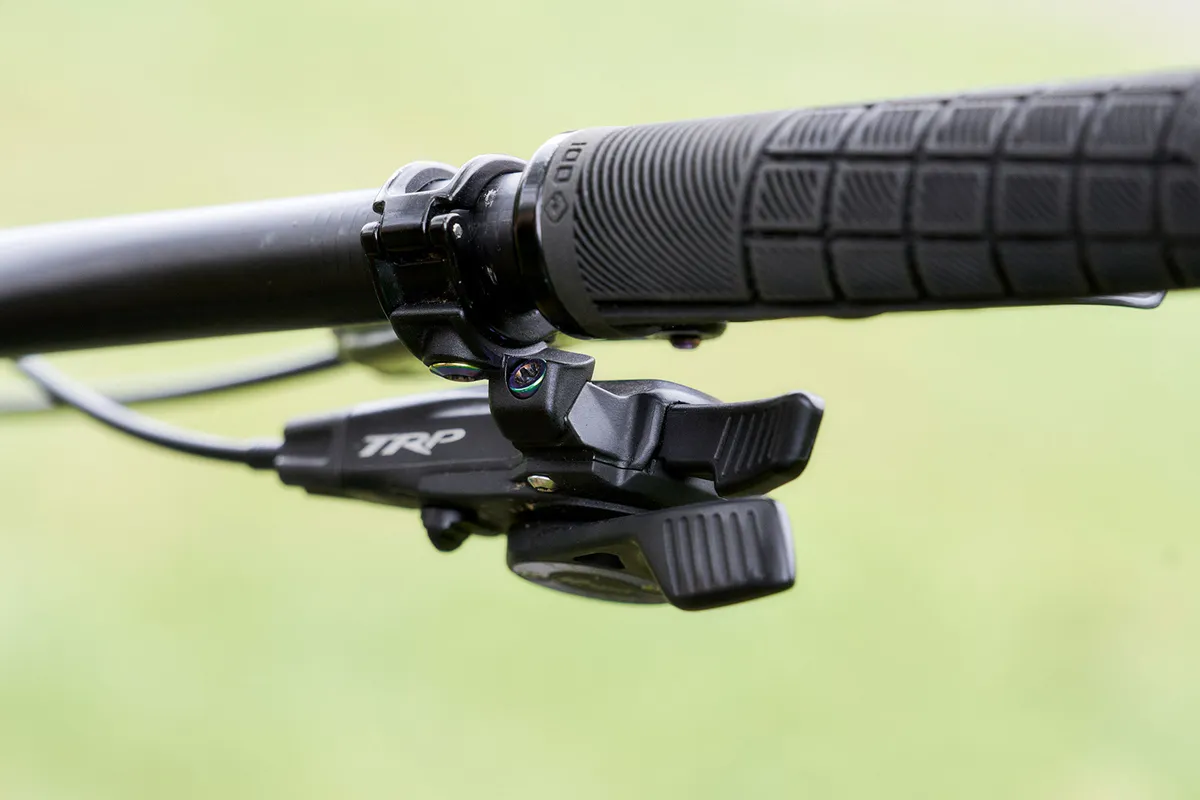
From the off, I was impressed by the solid and substantial feel of the shifter in my hand. There’s minimal play in either lever before you actuate a shift. The adjustable angle of the downshift paddle to go from harder to easier gears made it very easy to get it right where my short thumbs wanted.
I'm also a fan of the ability to choose between a single and up to five downshifts. This is done by flicking a switch underneath the shifter body.
However, depending on the kind of ride I was doing, I used it more than expected. It’s a nice touch to combine a feature SRAM offers across two variants of shifter. The brand sells separate shifter units for multi- or single-click downshifts.
The shifter is the standout feature of the group. It’s up there with the best mechanical shifters I’ve used, alongside SRAM’s X01/XX1 Eagle and Shimano’s XTR and Saint shifters. It has a rock-solid feel and the textured paddles are nice to the touch, with or without gloves.
The action is positive, yet light and I could be precise with my downshifts to an easier gear. This is especially true when the single-click mode is engaged. I initially thought I would set and forget this, but ended up switching frequently between modes.
If I was on a fast-paced ride, chasing down riding buddies or Strava times, the single click was great for being precise with my shifting. On longer, slower rides, the ability to dump a load of gears in one go was very nice to have.
My only real criticism of the shifter is the lack of side-to-side adjustment in the clamp. I had it mounted with both SRAM MMX mounts and the separate handlebar mount. With both mounts, I was able to find a comfortable position. However, it would be nice to have the option of more sideways adjustment.
TRP EVO12 rear derailleur performance

The derailleur has taken a few knocks, but has stayed straight and true. A slight amount of play developed in the parallelogram pins during testing, although this didn’t affect shifting performance.
Despite this, it delivered a quiet ride. Going from SRAM’s GX AXS, there was notably less chain slap and noise. The Hall Lock definitely takes some credit here, as does the new Silent Clutch. Unlike Alex’s experience with TR12, I didn’t hear a peep out of the EVO12 derailleur.
Even without the Hall Lock fully tightened down, drivetrain noise was kept to a minimum. I knew when I hadn't locked it down, with chain slap equivalent to a Shimano drivetrain with the clutch in the ‘off’ position. Chain noise increased a touch, although, unlike Shimano where turning the clutch on when fully tightened can affect shifting, it didn’t seem to affect the EVO12 derailleur's performance.
The pulley-cage clutch is non-adjustable, unlike the one used on TR12. I didn’t miss this feature though and the stock clutch tension is well-judged. Shifting is light at the lever, but the tension is firm enough to keep the chain tight and slap down.
TRP EVO12 cassette performance
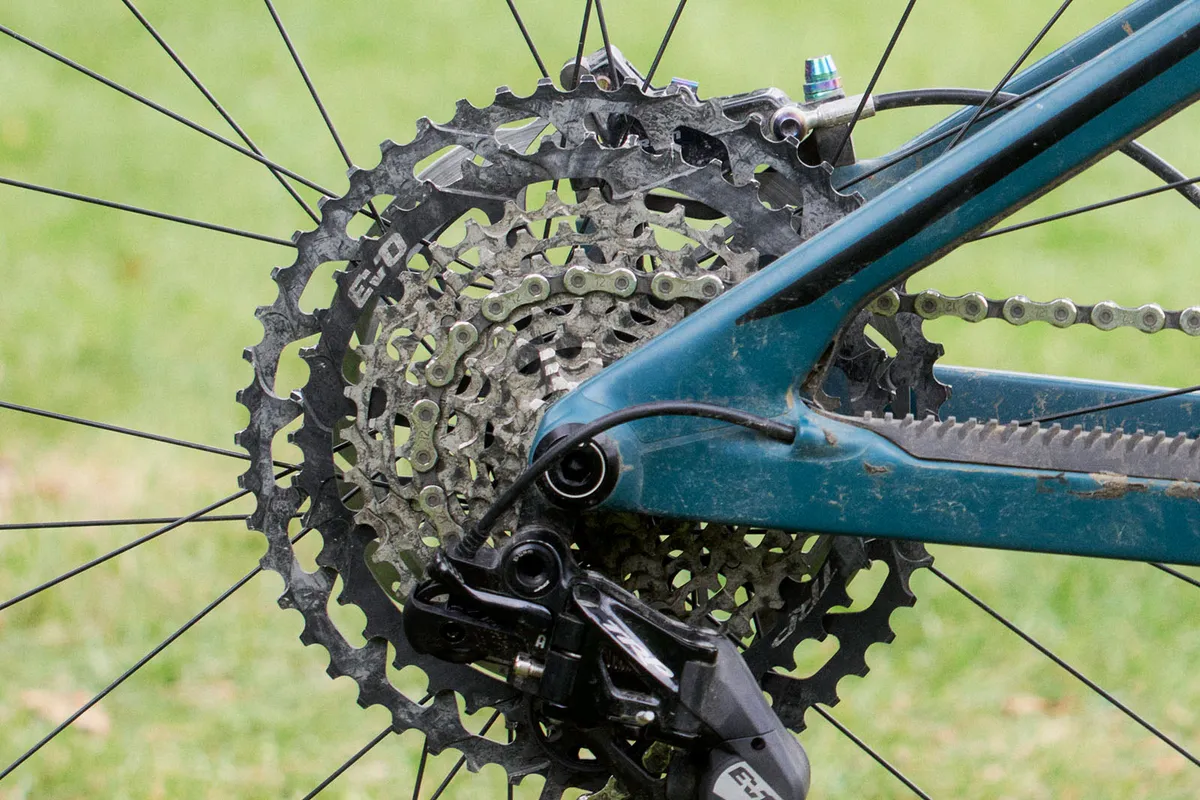
The cassette is machined beautifully, put together nicely and very light at 370g. The shifting performance is not quite at the level of the competition, however.
The chain shifts between gears quickly and easily enough with little resistance, but isn’t as smooth as Shimano’s Hyperglide or SRAM’s T-Type cassettes.
Shifts under load can sometimes be a touch loud, and multiple shifts out of the saddle, on the power, can crunch through the gears on occasion.
Given the premium price of the cassette and the quality feel of the shifter, I was expecting more.
The ratios are nicely spaced, with the smaller jumps between gears at either end of the cassette easy to keep a steady cadence to. I never felt there were gears I wanted but couldn’t have.
This is great on sustained climbs, where I felt I was always in the right gear ratio for the gradient in question. With SRAM’s second-generation 10-52T cassettes, that isn’t always the case.
The climbing end of the cassette has tighter 36-44-52T ratios. It's better than the 10t jump at the bottom end of SRAM’s second-generation 10-52t Eagle drivetrain cassettes.
Down at the other end of the cassette, the 10-11-13-15T cogs offer a smoother progression than Shimano’s 12-speed, and SRAM’s Drivetrain and Transmission cassettes. I find the 10-12T jump can feel a bit much on occasion.
So far, it has held up well and shows minimal wear after 500km. Robustness and longevity don’t appear to be issues.
TRP EVO12 crankset performance
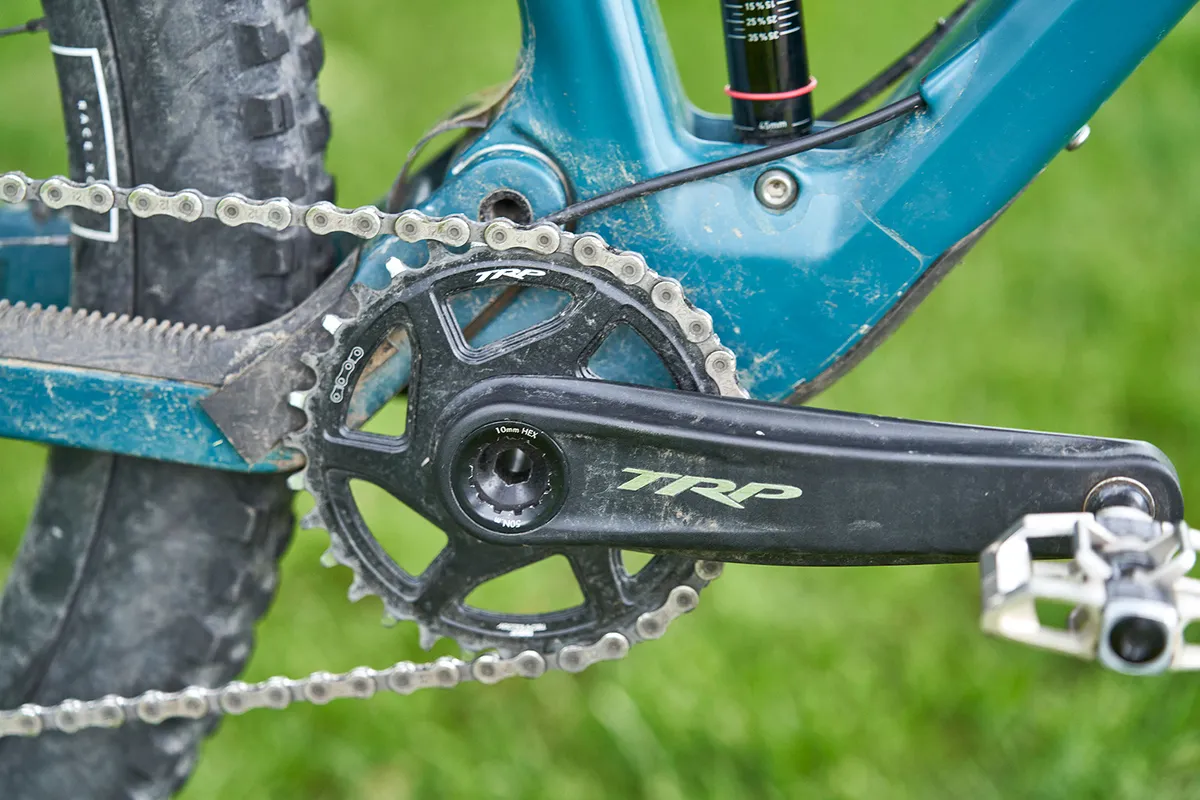
The crankset feels solid underfoot and I couldn’t feel any flex in the arms. Hard, out-of-the-saddle efforts were rewarded with a firm feel through the pedals.
I didn’t drop a chain during testing. Even when rallying my test bike on rough terrain, the chain stayed stoically in place.
Like the cassette, the chainring shows minimal signs of wear, with only a slight deterioration to the anodising on the teeth.
The TRP bottom bracket is also still spinning smoothly. While I’m not the worst for it, the arms themselves are free of any major scuffing from my shoes.
How does TRP’s EVO12 drivetrain compare to Shimano’s XTR and SRAM GX Transmission?
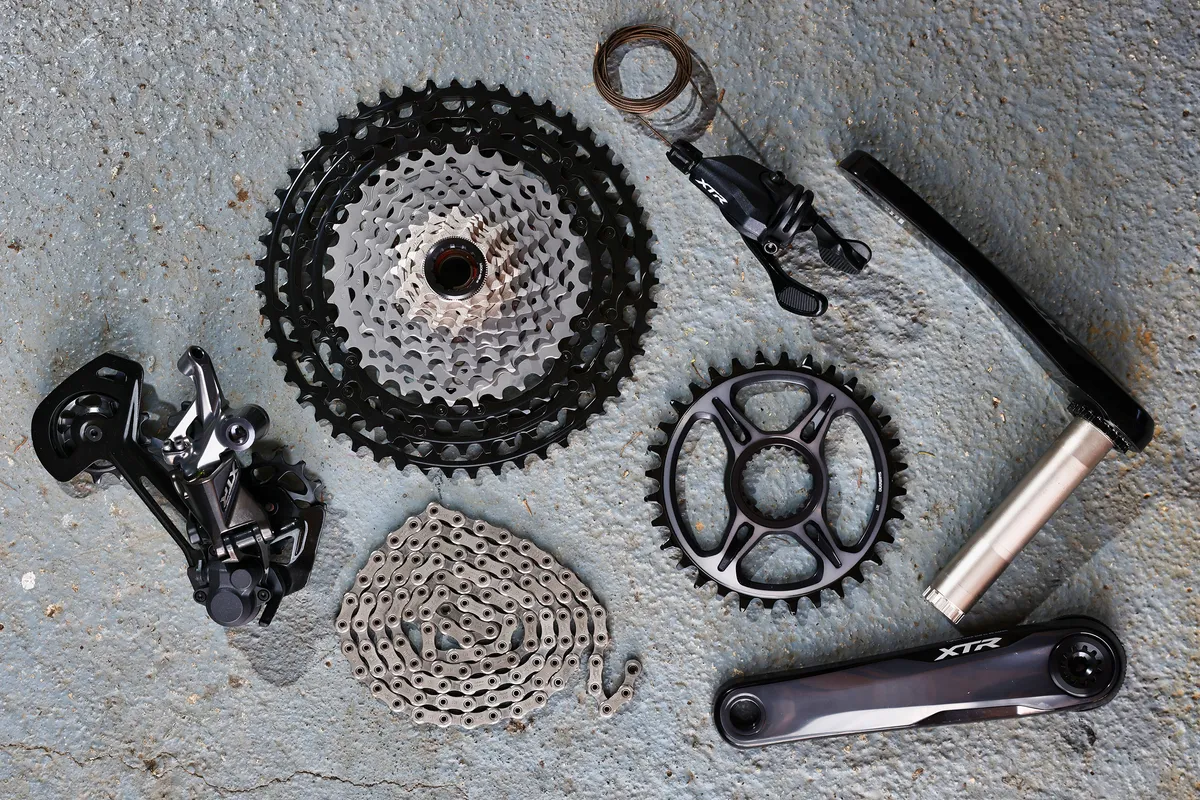
Given its price point, the shifting performance and feel of EVO12, it sits in a difficult place. It competes price-wise with Shimano’s range-topping XTR groupset (£1,125.94/$1,469.94) and SRAM’s wireless GX Transmission (£1,180/$1,099). Both of those rivals offer something EVO12 doesn’t.
It’s heavier than XTR (1,721g vs 1,543g) and harder to set up than GX Transmission. Even taking those issues aside, the shifting performance isn’t a match for either. It's not as smooth under load, and clunks and bangs were a more common occurrence in my testing.
Put alongside SRAM’s mechanical GX Eagle drivetrain or Shimano’s XT M8100, the performance gap narrows to almost nothing; an impressive feat for TRP given this is its first full groupset. However, there remains a gulf in price between TRP, GX (£549), and XT (£609.94).
If TRP wants EVO12 to compete with the drivetrain big guns, it’ll need to step up its performance further. Or, alternatively, it needs to ditch the carbon derailleur cage and fancy cassette construction, and significantly drop the price. This would increase the weight slightly, but the 100g or so penalty would be negligible.
Priced alongside GX Eagle and Shimano Deore XT, EVO12 would be a more viable alternative.
TRP EVO12 drivetrain bottom line
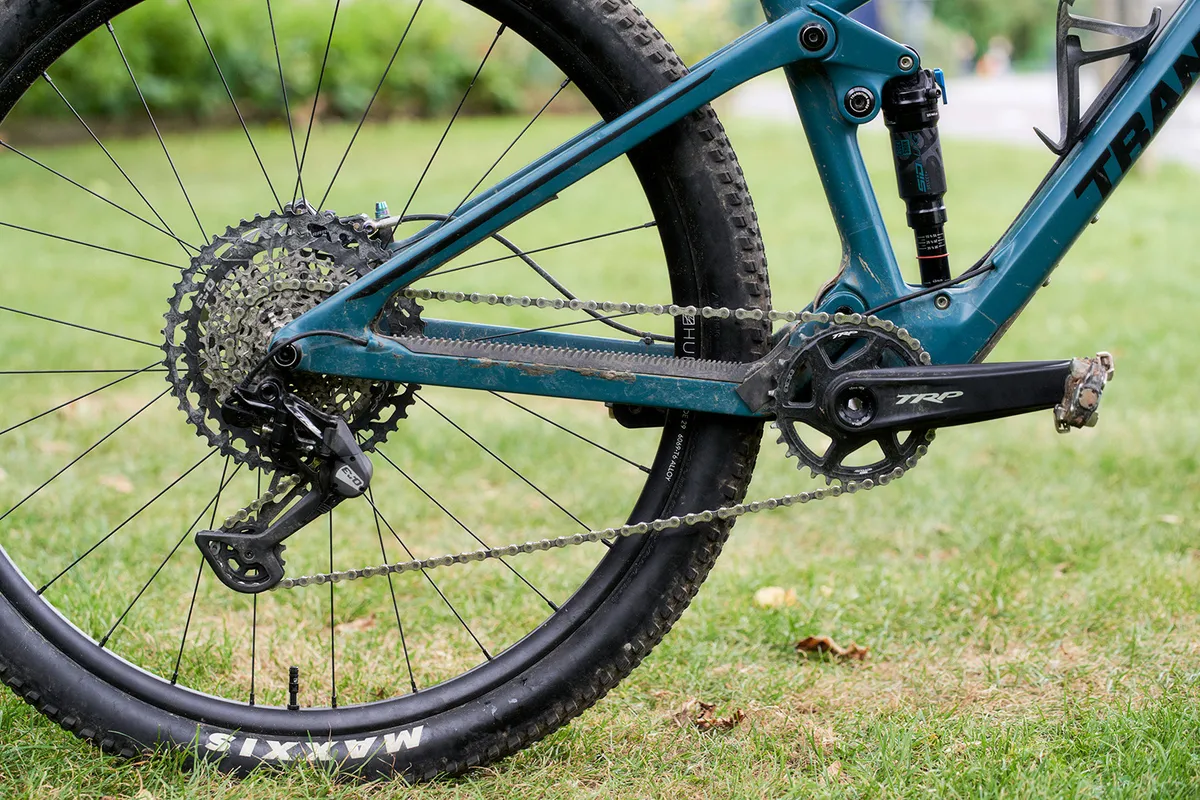
TRP’s EVO12 drivetrain doesn’t do anything wrong. Quite the opposite in fact. The shifter is one of the most ergonomic I’ve used and its chain control is up there with the best too. The problem is the price for the shifting performance you get.
It simply isn’t on a par with similarly priced drivetrains from SRAM and Shimano. Both offer the same level of shifting performance at a much lower cost.
Upgrade a mechanical GX or XT drivetrain with an XTR or X01 shifter and you’d match the shifter ergonomics and shift quality of TRP for close to two thirds of the price.
On the flipside, weight weenies can go for Shimano XTR and tech nerds can opt for GX Transmission for similar cost. Both would add smoother shifting performance into the package as well.
As such, while EVO12 is a solid step forward compared to TRP’s first-generation TR12, you’d have to really want to shop away from the big drivetrain brands to justify the price tag.
Product
| Brand | Trp |
| Price | £994.00, $993.00 |
| Weight | 1721g |
Features
| Features | Weight mech: 294g Weight shifter: 125g Weight cassette: 379g Weight crankset: 655g Weight chain: 268g |
